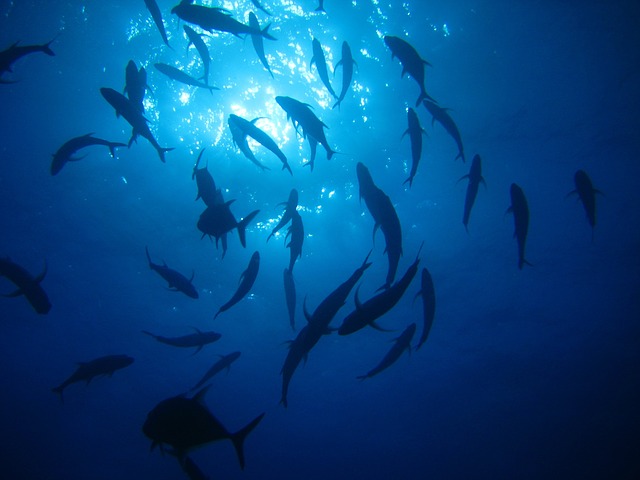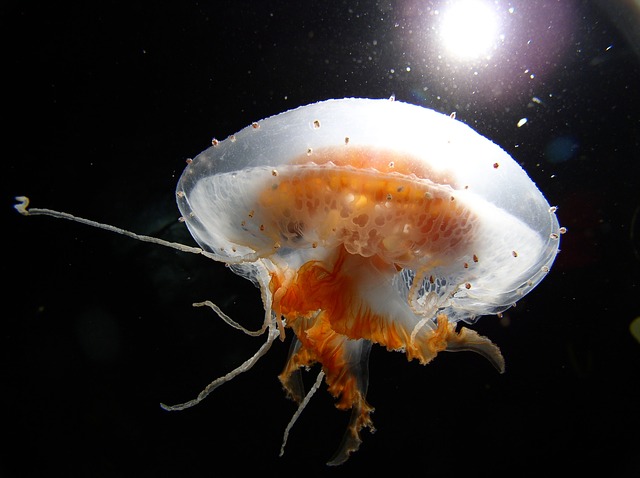By Jan Zalasiewicz and Mark Williams
It pays to be nice. One of the most absolutely, emphatically wrong hypotheses about the oceans was coined by one of the most carefree and amiable people in nineteenth century science. It should have sunk his reputation without trace. Yet, it did not. He thought the deep oceans were stone cold dead and lifeless. They’re certainly not that. Even more amazingly, it was clear that the deep oceans were full of life even before he proposed his hypothesis — and yet the idea persisted for decades. He is still regarded as the father of marine biology. There’s a moral in that somewhere.

Edward Forbes was born a Manxman who early developed a love of natural history. He collected flowers, seashells, butterflies with a passion that saw him neglect, then fail dismally in, his studies: first as an artist (he had a fine talent for drawing) then as a doctor. He drifted into becoming some kind of itinerant naturalist who naturally shook things up around him. Going to the British Association meeting in Birmingham, he reacted to the formal atmosphere by decamping to a local pub, the Red Lion, and taking a good deal of the membership with him. There, fueled by beef and beer, they debated the great scientific ideas of the day. They expressed agreement or disagreement with debating points not by a show of hands, but growling like lions and fluttering their coat-tails (Forbes’s technique with the coat-tails was held up as a model for the younger Lions).
In 1841, Forbes was on board a surveying ship, the HMS Beacon, in the Mediterranean. He noticed that as they dredged in deeper waters, the dredge buckets brought up fewer types of marine organism. He extrapolated from that to propose the “azoic hypothesis” — that the deep oceans were dead. It seemed not unreasonable — as one climbs higher up mountains, life diminishes, then disappears. For it to do the same in the oceans would show a nice symmetry. The azoic hypothesis took hold.
The trouble was, even then, commercial ships — with sounding lines far longer than the Beacon’s dredge buckets could go — were occasionally pulling up starfish and other animals from as much as two kilometers down. That should have killed the azoic hypothesis stone dead. But it didn’t. As luck had it, the first reports of such things happened to be sent in by ship’s captains who were either known for telling tall tales or who were plain bad-tempered. They couldn’t compete with Forbes’s eloquence or charm.

It took quite a few years before the weight of evidence finally dragged down the azoic hypothesis. We now know that the Earth’s deep oceans are alive, the thriving communities sustained by a rain of nutrients from above. Edward Forbes’s brainchild is simply one of many of the ideas through which we have gained — tortuously — a better understanding of the Earth’s oceans.
There have been other extraordinary characters, too, involved in this story. The scientists who concocted the inspired lunacy of the American Miscellaneous Society (AMSOC), for example, where every member automatically became a founding member, and where one of the rules was that there were no rules. Crazy as it was, AMSOC led to the Ocean Drilling Program, which revolutionized our knowledge of the deep ocean floors, of the history of global climate and of very much else. It’s also one of the great unsung revolutions of world science — but then there’s much that concerns the oceans that deserves to be more widely known.
There are extraordinary characters involved, too, in the new frontier of ocean science: the oceans that exist, or once existed, on other worlds. There’s the unfortunate Giordano Bruno, who imagined far-off worlds like our own — and who was burned at the stake for expounding these and other heresies. There’s Svante Arrhenius, who, a century ago, got Mars exactly right (no chance of canals, or water, he said) — but got Venus quite wrong (a thoroughly wet planet, he thought, and not the dry baking hell we now know it to be). There’s the wonderful mistake, too, of the contaminated detectors on a spacecraft on Venus — that led to the discovery of the oceans that likely once existed there.
We discover seas on other planets and moons, even as we still try to understand our own Earthly oceans. Just how have they lasted so long? And how will they change — in the next century, and in the next billion years? The story of oceans is really, truly never-ending.
Jan Zalasiewicz is Senior Lecturer in Geology and Mark Williams is Professor in Geology, both at the University of Leicester. They are also co-authors of Ocean Worlds: The story of seas on Earth and other planets.
Subscribe to the OUPblog via email or RSS.
Subscribe to only earth, environmental, and life sciences articles on the OUPblog via email or RSS.
Images: Underwater sea life – Public Domain via Pixabay. Jellyfish – Public Domain via Pixabay
The post The life of oceans: a history of marine discovery appeared first on OUPblog.


